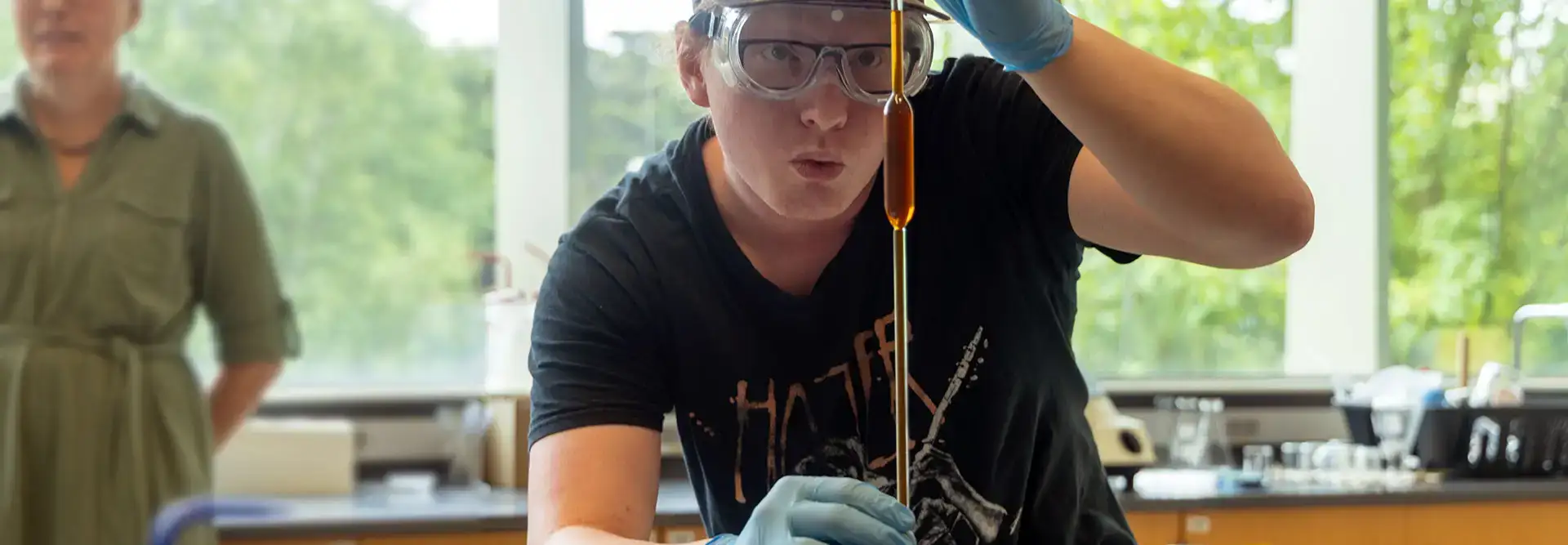SUNY Oneonta students are getting firsthand experience in their fields of study this summer through research and creative projects on topics ranging from local lake water quality to a paleoanthropology field school abroad.
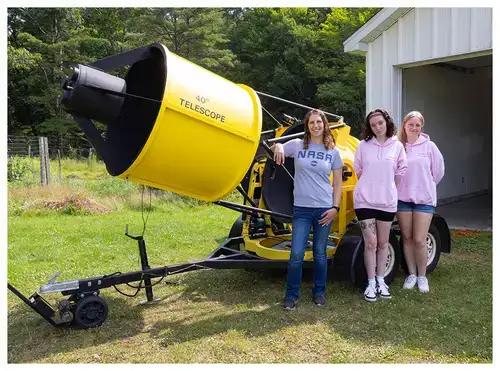
With guidance and support from faculty members, 20 SUNY Oneonta students are involved in a variety of new and continuing research and creative projects on and off campus through the university’s Summer Research Fellowship Program.
The 2025 Summer Research Fellowship recipients receive financial support from University Advancement’s Student Research and Creative Activity Grant Fund, with additional funding from the Office of Alumni Engagement. Students receive grants of up to $3,000 each, with a maximum of $6,000 for two or more students working together on a single project. In addition, students who must remain on campus for their research stay at SUNY Oneonta for free this summer.
“The summer fellowships provide students with a great opportunity to do concentrated, in-depth, faculty-led research and creative projects without sacrificing their ability to earn money at a time when so many students are home working summer jobs,” said Audrey Porsche, associate director of scholarly activities.
The students will share their projects with the campus community during the Summer Research Fellowship Showcase on Tuesday, Sept. 22.
Persistent Snow in a Taconic Mountains "Ice Cave"
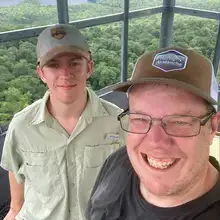
Traveling throughout New York and its adjacent states, Meteorology major Reid Buchanan and Assistant Professor of Meteorology and Climatology Chris Karmosky are working on a project titled “Persistent Snow in a Taconic Mountains "Ice Cave": Past Temperature Records and GIS Analysis of Potential Additional Study Sites.” Buchanan is the third SUNY Oneonta student to help Karmosky with this research project over the past seven years.
“We are looking at sites around New York and adjacent states that have snow pockets that last well into the summer,” said Karmosky. “We are using temperatures we collect from these sites as well as from other sites to try to estimate whether these sites meet the criteria for "permafrost" and if not, was it possible that they did meet this criteria before recent climate change caused by human activity.”
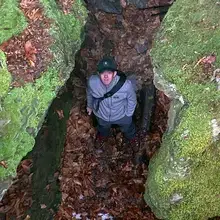
At the primary field site, located near Williamstown, Mass., Buchanan and Karmosky are investigating why ice has remained there since the 1700s, despite nearby locations experiencing more rapid melting. Using years of temperature data from across the region, their team is reconstructing past climate conditions and assessing whether these areas once qualified as permafrost zones. Fieldwork involves hiking to remote locations, collecting surface and internal ice temperatures, and utilizing GIS tools to identify additional potential study sites.
“We plan on taking a trip to two sites in the Adirondacks later this month and returning to the Snow Hole in early August once it has melted out,” said Buchanan. “My favorite part of the research so far is the field work. I enjoy being outside and seeing the sites we are studying in person. After graduation, I hope to go to graduate school, and undergraduate research is excellent to have on my resume for graduate school and beyond.”
Confirming TESS Exoplanet Candidates from the SUNY Oneonta Observatory
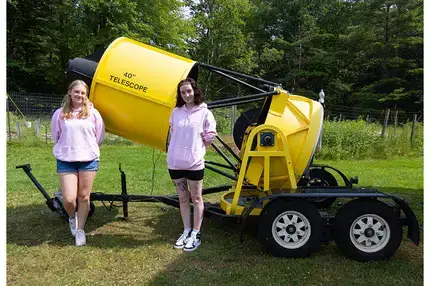
Just a short drive from SUNY Oneonta’s campus, students Julia Busemeyer and Delaney Vitzthum joined Assistant Professor of Physics and Astronomy Valerie Rapson at College Camp to confirm exoplanet candidates identified by NASA’s TESS space telescope. As part of the project “Confirming TESS Exoplanet Candidates from the SUNY Oneonta Observatory,” they used the campus’s 1-meter telescope to identify visible target systems, capture images during predicted planetary transits and process the data to generate light curves.
My favorite part of the research has definitely been observing,”
“I loved learning how to use the telescope and to look at whatever we are interested in. The summer research is a great opportunity to learn at a comfortable pace and will help me in the future because of the experience it gave me from learning how to analyze data.”
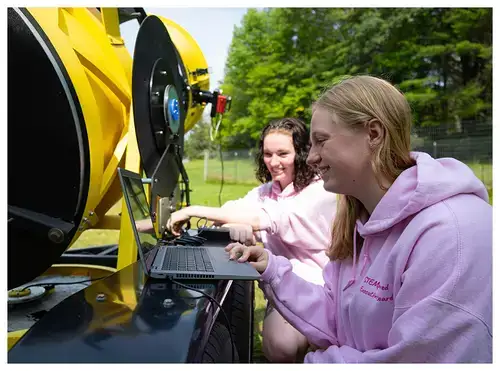
The light curves reveal whether a planet is truly orbiting a host star and help estimate its size and orbital period. Using Python-based modeling software, the team will determine the size and orbital characteristics of these distant worlds and compare results with published predictions. Their research will contribute to the global effort to confirm TESS exoplanet discoveries.
“After graduation, I plan to attend graduate school and obtain a PhD in astrophysics,” said Busemeyer, who is majoring in Physics at Oneonta. “Career-wise, I haven’t figured out what specific branch of astronomy/astrophysics research I want to go into, but that's part of the reason why this internship experience is so great! I get a taste of a potential career that will help me make that decision down the road.”
Sustainable Soil Science: Using FTIR-ATR to Support Local Organic Farms
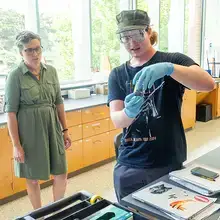
Back on campus, Chemistry major Elijah Rechnitzer is gaining hands-on experience in the Physical Science building through the project “Sustainable Soil Science: Using FTIR-ATR to Support Local Organic Farms.” Under the mentorship of Chemistry and Biochemistry Lecturer Lisa Kastanis, who also serves as the department’s inventory control manager, Rechnitzer is helping to advance sustainable agriculture by using FTIR-ATR (Fourier Transform Infrared–Attenuated Total Reflectance) spectroscopy. This method allows for soil analysis that is faster, safer and more cost-effective than traditional techniques.
When you think about it, everything comes from the soil. All the food we eat is a function of the quality of our soil,”
“So, if we're not taking care of our soil, if we're treating it with pesticides and herbicides, then we're only harming ourselves. By learning reagent-free ways to test our soils, we're benefiting ourselves because we can learn how to improve the quality of our soils in a manner that is going to really improve our quality of life.”
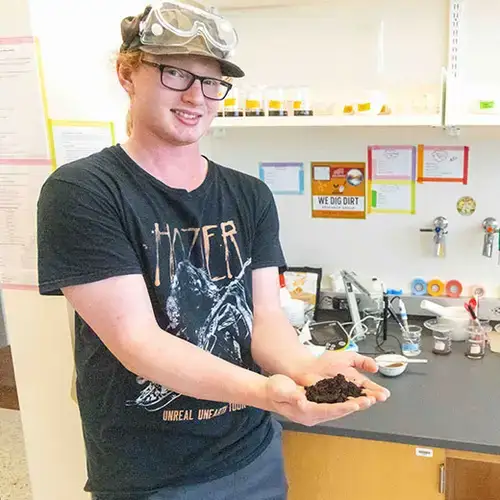
By collecting mid-infrared spectral data and processing it in R, a programming language and software environment used for data analysis, statistics and visualization, Rechnitzer and Kastanis are building a spectral library that can be used to assess soil quality on local organic farms. The project combines scientific innovation with practical impact, providing area farmers with clear, data-driven reports.
“The most important thing that I think this project will do to help me with my future is getting early hands-on experience in the lab,” said Rechnitzer. In this research project, I am allowed to tweak parts of the procedure to make the experiment flow or work better. I am also in control of the entire experiment from start to finish, making all of the solutions that I need from scratch and working with all of the instruments without much restriction.”
